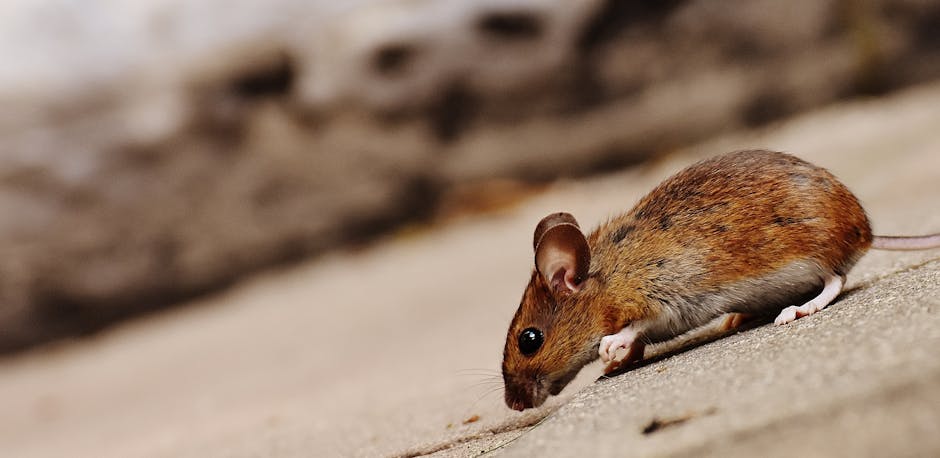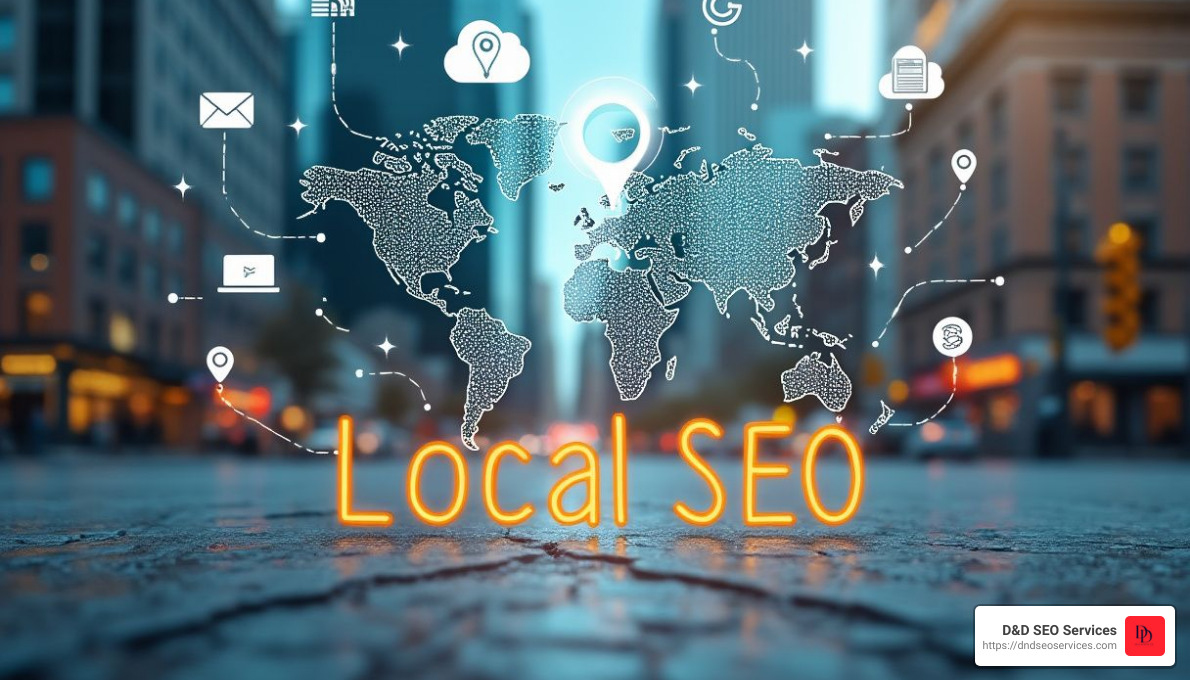Why SEO is Essential for Pest Control in NYC
If you’re searching for pest control SEO NYC, you’re in the right place. SEO (Search Engine Optimization) is crucial for any local business to find new customers online. Here’s why it matters for pest control:
- Increase Online Visibility: 97% of users go online to find local services. Without SEO, you risk missing out on a huge pool of potential clients.
- Target the Right Audience: With local SEO, you can ensure that your business shows up when people in NYC need pest control services urgently.
- Build Credibility and Trust: Ranking high on search engines makes your business look more reputable and reliable to potential customers.
I’m Danielle Birriel, founder of D&D SEO Services. With over a decade of experience, I specialize in helping local businesses, including pest control companies, thrive in competitive markets like NYC. I’m eager to share actionable SEO tips to boost your online presence.
Understanding Pest Control SEO
SEO, or Search Engine Optimization, is the practice of improving your website so it ranks higher in search engine results. For pest control businesses in NYC, this means making sure that when someone searches for “pest control NYC,” your company appears at the top of the list.
Search Engine Rankings
Search engine rankings are determined by complex algorithms that evaluate various factors on your website. These factors include the relevance of your content, the quality of your links, and how users interact with your site. Higher rankings mean more visibility and more potential customers.
Organic Traffic
Organic traffic refers to visitors who find your website through search engines without paid ads. This type of traffic is highly valuable because it consists of people actively searching for the services you offer. For example, if your site ranks well for “bed bug removal in NYC,” you’ll attract visitors who need that specific service.
Keyword research is the process of finding the terms your potential customers are using to search for services like yours. Tools like Google Keyword Planner can help you identify relevant keywords. For instance, “pest control NYC,” “termite treatment,” and “exterminator” are all keywords that might be important for your business.
On-Page SEO
On-page SEO involves optimizing elements on your website to improve search rankings. Here are some key components:
- Title Tags: Your title tags should be clear and include your main keywords. For example, “Best Pest Control Services in NYC | Your Company Name.”
- Meta Descriptions: These are short summaries that appear below your title in search results. They should be compelling and include key terms.
- Header Tags: Use H1, H2, and H3 tags to organize your content. This makes it easier for search engines to understand the structure of your page.
- Keyword Placement: Naturally include keywords throughout your content. Avoid keyword stuffing, which can harm your rankings.
- Internal Linking: Link to other relevant pages on your site. This helps search engines understand the relationship between your pages.
Off-Page SEO
Off-page SEO refers to actions taken outside your website to improve its ranking. Key strategies include:
- External Links: Getting other reputable websites to link to your site. For example, if a local news site mentions your business and links to your homepage, this can boost your authority.
- Social Media Profiles: Maintain active profiles on platforms like Facebook and Instagram. Share content that links back to your website.
- Local Citations: Ensure your business information is listed accurately on local directories like Yelp and Google My Business.
- Online Reviews: Encourage satisfied customers to leave positive reviews. Respond to all reviews to show that you value customer feedback.
By understanding and implementing these SEO strategies, you can significantly improve your online visibility and attract more customers to your pest control business in NYC. Next, let’s dive into specific on-page SEO techniques that can further improve your website’s performance.
Optimizing Your Website for Pest Control SEO in NYC
On-Page SEO Techniques
Optimizing your website for pest control SEO in NYC starts with effective on-page SEO. This involves making adjustments directly on your website to improve its search engine ranking.
Title Tags
Title tags are crucial as they tell search engines what your page is about. Make them descriptive and relevant. For example, instead of a generic title like “Services,” use “Bed Bug Removal Services in New York City – Your Company Name.” This helps search engines understand your content better and can improve your ranking.
Meta Descriptions
Meta descriptions provide a summary of your page’s content. Although they are not a direct ranking factor, they influence click-through rates. Include your primary keyword and a compelling call to action. For instance, “Need reliable bed bug removal in NYC? Contact us today for expert services!”
URLs
A clear and user-friendly URL structure improves user experience and SEO. Use descriptive URLs like “www.yourcompany.com/bed-bug-removal-nyc” instead of “www.yourcompany.com/page123.” This makes it easier for both users and search engines to understand the page’s content.
Header Tags
Header tags (H1, H2, H3) help structure your content and make it more readable. Your H1 tag should include your main keyword, such as “Pest Control in NYC.” Use H2 and H3 tags for secondary keywords and subtopics.
Keyword Placement
Incorporate relevant keywords naturally throughout your content. Avoid keyword stuffing, as it can lead to penalties. Instead, focus on using keywords in strategic places like the title, headers, and the first 100 words of your content.
Internal Linking
Linking to other pages on your website helps search engines understand the structure of your site and improves navigation for users. For example, link from your main pest control services page to specific service pages like “Bed Bug Removal” or “Rodent Control.”
Off-Page SEO Strategies
Off-page SEO involves actions taken outside your website to improve its ranking. These strategies are crucial for building your site’s authority and credibility.
External Links
Building external links from reputable websites can significantly boost your site’s authority. For example, if a well-known pest control blog links to your article on DIY pest control methods, it signals to search engines that your content is valuable.
Social Media Profiles
Having active social media profiles can drive traffic to your site and improve your online presence. Share your content regularly and engage with your audience to build a community around your brand.
Local Citations
Ensure your business information (NAP: Name, Address, Phone number) is consistent across local directories like Yelp, Bing Places, and Google My Business. This consistency helps search engines verify your business information and improves local search rankings.
Online Reviews
Encourage satisfied customers to leave positive reviews on platforms like Google My Business and Yelp. Respond to all reviews, whether positive or negative, to show that you value customer feedback. Positive reviews can improve your rankings and attract more customers.
By implementing these on-page and off-page SEO techniques, you can improve your website’s performance and visibility in search engines. Next, let’s explore how to leverage Google My Business for local SEO.
Leveraging Google My Business for Local SEO
Setting Up and Optimizing Your Google Business Profile
A Google Business Profile is essential for local SEO success. It helps your pest control business appear in local search results, making it easier for potential customers in NYC to find you. Here’s how to set up and optimize your profile effectively.
Verification Process
First, claim and verify your Google Business Profile. This step is crucial as it gives you control over the information displayed. Visit the Google My Business website and follow the instructions to claim your profile. Verification might involve receiving a postcard at your business address with a code to confirm your details.
Accurate NAP
Consistency is key. Ensure your Name, Address, and Phone number (NAP) are accurate and match what is listed on your website and other directories. Inconsistent information can confuse search engines and potential customers.
Business Categories
Choose the most relevant categories for your business. For a pest control service in NYC, categories like “Pest Control Service” or “Exterminator” are appropriate. This helps Google understand what your business is about and show it in relevant searches.
Business Description
Write a compelling business description that highlights what makes your service unique. Include relevant keywords naturally, such as “pest control NYC” or “exterminator services in New York City.” This helps improve your profile’s relevance in local searches.
Hours of Operation
Make sure your hours of operation are accurate and up-to-date. If your hours change seasonally, update them promptly. Accurate hours help customers know when they can reach you and avoid frustration.
Images
Upload high-quality images of your team, equipment, and successful pest control interventions. Profiles with photos get 42% more requests for directions and 35% more website clicks. Good visuals make your profile more appealing and trustworthy.
Customer Engagement
Engage with your customers through Google My Business. Respond to reviews, both positive and negative, to show that you value customer feedback. Use Google Posts to share updates, promotions, and relevant content directly on your profile. Regular posts keep your information fresh and can improve your visibility in local search results.
By setting up and optimizing your Google Business Profile, you can significantly boost your local SEO efforts and attract more customers in NYC. Next, let’s dive into effective keyword research and strategy for pest control SEO.
Effective Keyword Research and Strategy
Targeting Local Keywords
To succeed with pest control SEO in NYC, you need to master keyword research. This involves finding and using the right keywords to attract local customers. Here’s how you can do it effectively:
1. Keyword Planner Tools
Use tools like Google Keyword Planner, Ahrefs, and Semrush to find relevant keywords. These tools help you see search volumes, competition levels, and trends.
- Google Keyword Planner: Great for beginners. It shows search volumes and competition for keywords.
- Ahrefs and Semrush: More detailed, offering competitor insights and difficulty scores.
2. Buying Intent Keywords
Focus on keywords that show buying intent. These are search terms people use when they’re ready to hire a pest control service. For example:
- “bed bug exterminator NYC”
- “termite treatment NYC”
These keywords lead to faster conversions because the searcher has a problem and needs a solution now.
3. Research Intent Keywords
Don’t ignore research intent keywords. These are used by people looking for information. They might not convert immediately but can bring future business. Examples include:
- “what do termites look like”
- “how to get rid of bed bugs”
Use these keywords for blog posts and FAQs. They position your company as an expert and build trust.
4. Local Keywords
Local keywords are essential for targeting customers in NYC. They often include city names or neighborhoods. Examples:
- “pest control NYC”
- “exterminator Manhattan”
Google prioritizes local results for these searches, making them crucial for local SEO.
5. Long-Tail Keywords
Long-tail keywords are longer and more specific. They usually have lower search volumes but higher conversion rates. Examples:
- “affordable pest control services in Brooklyn”
- “emergency rodent control in Queens”
These keywords attract highly qualified leads who know what they want.
6. Geo-Targeted Keywords
Geo-targeted keywords include specific locations within NYC. This helps you target smaller areas and neighborhoods. Examples:
- “pest control in Upper East Side”
- “exterminator in Harlem”
These keywords are useful for creating service area pages on your website.
7. Local Search Trends
Stay updated with local search trends. Use tools like Google Trends to see what people are searching for in NYC. This helps you adjust your strategy based on current demand.
8. Keyword Placement
Proper keyword placement is crucial. Include your target keywords in:
- Title tags: The title of your page.
- Meta descriptions: The brief summary under your title in search results.
- Header tags: The headings within your content.
- Content: Naturally within the first 100 words and throughout your content.
By focusing on these strategies, you can effectively target local keywords and improve your pest control SEO in NYC. Next, let’s explore how to build high-quality backlinks to boost your site’s authority.
Building High-Quality Backlinks
Strategies for Acquiring Backlinks
Building high-quality backlinks is essential for boosting your site’s authority and improving your pest control SEO in NYC. Here are some effective strategies to get you started:
1. Authoritative Websites
Getting backlinks from authoritative websites is like getting a vote of confidence from a trusted source. These sites have high domain authority and can significantly boost your rankings.
- Example: If a reputable pest control association links to your blog post about effective bed bug removal, it signals to search engines that your content is trustworthy.
- How to Do It: Reach out to industry-specific websites, offer to write guest posts, or provide valuable resources they might want to link to.
2. Industry Partnerships
Forming partnerships with other businesses in your industry can be mutually beneficial. These partnerships can lead to natural backlink opportunities.
- Example: Collaborate with a local hardware store to create a joint guide on pest prevention. Both businesses can link to this guide, boosting each other’s SEO.
- How to Do It: Network within your industry and look for opportunities to collaborate on content or events.
3. Content Marketing
Creating high-quality, shareable content is a cornerstone of effective link-building. When your content is valuable, other sites are more likely to link to it.
- Example: Publish a comprehensive guide on DIY pest control methods. This type of content is highly shareable and can attract backlinks from blogs and forums.
- How to Do It: Focus on creating detailed, informative content that addresses common problems or questions in your industry.
4. Guest Blogging
Guest blogging is a great way to earn backlinks while showcasing your expertise. Write articles for other blogs in your niche and include a link back to your site.
- Example: Write a guest post on a home improvement blog about the importance of professional pest control services.
- How to Do It: Identify blogs that accept guest posts, pitch your ideas, and provide high-quality content.
5. Social Outreach
Engaging with the community through social media can also help in acquiring backlinks. Share your content and interact with influencers and other businesses.
- Example: Share your latest blog post on effective pest control on social media platforms and tag relevant influencers.
- How to Do It: Be active on social media, share valuable content, and engage with your audience and industry influencers.
6. Press Releases
Sending out press releases for significant events or new services can attract media attention and backlinks from news outlets.
- Example: Announce a new eco-friendly pest control service through a press release. When local news websites pick it up, they will link back to your site.
- How to Do It: Craft a compelling press release and distribute it to local news outlets and industry publications.
7. Influencer Collaborations
Partnering with influencers in your niche can help you reach a broader audience and earn high-quality backlinks.
- Example: Collaborate with a home improvement influencer to create a video on pest prevention tips. The influencer can link back to your website in the video description.
- How to Do It: Identify influencers who align with your brand and propose collaboration ideas that provide value to both parties.
By implementing these strategies, you can build a strong backlink profile that improves your pest control SEO in NYC. Next, let’s explore how to track and analyze your SEO performance.
Tracking and Analyzing SEO Performance
Key Metrics to Monitor
To understand the impact of your pest control SEO in NYC and make data-driven decisions, it’s crucial to track and analyze key metrics. Here are the most important ones:
Google Analytics
Google Analytics is essential for monitoring website traffic and user behavior. Set it up to track:
- Organic Traffic: The number of visitors coming from search engines. Increasing organic traffic indicates successful SEO efforts.
- Bounce Rate: The percentage of visitors who leave your site after viewing only one page. A lower bounce rate suggests engaging content.
- Conversion Rate: Measures how many visitors take a desired action, like filling out a contact form. A higher conversion rate means your site effectively turns visitors into leads.
- Time on Site: How long visitors stay on your website. Longer times indicate valuable content.
Google Search Console
Google Search Console offers data on search queries, clicks, and impressions. Key features include:
- Search Queries: Understand which keywords bring visitors to your site.
- Click-Through Rate (CTR): How often users click on your site after seeing it in search results. A higher CTR means your meta tags and descriptions are compelling.
- Index Coverage: Ensure all your important pages are indexed by Google.
Ranking Metrics
Tracking your keyword rankings helps you see how well your site is performing in search engine results. Use tools like SEMrush or Ahrefs to monitor:
- Keyword Positions: Track where your pages rank for specific keywords. Higher rankings generally lead to more traffic.
- SERP Features: Check if your content appears in special features like local packs or featured snippets.
Traffic Metrics
Understanding your traffic sources can help you focus your efforts. Monitor:
- Direct Traffic: Visitors who type your URL directly into their browser.
- Referral Traffic: Visitors who come from other websites linking to yours.
- Social Traffic: Traffic from social media platforms.
Conversion Metrics
Conversions are the ultimate goal of your SEO efforts. Track:
- Goal Completions: Set up goals in Google Analytics to track actions like form submissions or phone calls.
- E-commerce Tracking: If you sell products online, track sales and revenue.
By consistently monitoring these metrics, you can fine-tune your SEO strategy and achieve better results over time.
Next, let’s dive into some frequently asked questions about pest control SEO in NYC.
Frequently Asked Questions about Pest Control SEO in NYC
How much do pest control technicians make in NYC?
Pest control technicians in New York City can expect to earn a decent wage due to the high demand for their services. On average, salaries range from $35,000 to $50,000 per year. Experienced technicians or those with specialized skills can earn even more. This income reflects the cost of living in NYC and the essential nature of pest control services in a densely populated area.
How much is pest control in NYC?
The cost of pest control services in NYC varies based on the type of pest, the extent of the infestation, and the treatment required. On average, homeowners can expect to pay between $150 to $300 for a one-time treatment. Monthly or quarterly service plans can range from $40 to $100 per month. These prices can fluctuate based on the specific needs and size of the property.
Do landlords have to pay for pest control in NYC?
Yes, in many cases, landlords are required to pay for pest control in NYC. According to the New York City Housing Maintenance Code, landlords must keep their properties free from pests and provide necessary extermination services. Tenants should report any pest issues promptly to ensure landlords take action. However, if a tenant’s actions contribute to the pest problem, they may be held responsible for the cost.
Next, let’s dive into some effective keyword research and strategy techniques for pest control SEO in NYC.
Conclusion
To sum up, effective pest control SEO in NYC requires a well-rounded approach. We need to focus on both on-page and off-page SEO techniques, optimize our Google My Business profile, and perform thorough keyword research. Building high-quality backlinks and consistently tracking our SEO performance are also crucial steps.
SEO is vital for any pest control business aiming to grow its online presence. With over 96% of U.S. consumers using the internet to find local services, SEO can significantly boost our leads and conversions. It also helps establish trust and credibility with customers, creating more opportunities for business growth.
At D&D SEO Services, we specialize in creating personalized SEO strategies custom to our clients’ needs. Our team understands the unique challenges of the NYC market and leverages this expertise to deliver the best results. From keyword research to content optimization, we cover all aspects of SEO to ensure our clients dominate their local market.
Ready to lift your pest control business with effective SEO strategies? Contact D&D SEO Services today to get started!








